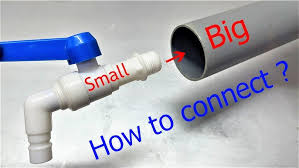Joining PVC pipes is a common task in home improvement and plumbing projects. Whether you are installing a new irrigation system, repairing a plumbing issue, or creating a DIY project, understanding how to securely join PVC pipes is essential. This guide will walk you through the process step-by-step to ensure a strong and leak-proof connection.
Tools and Materials Needed
Before you begin, gather the following tools and materials:
- PVC pipes
- PVC pipe cutter or hacksaw
- Measuring tape
- Marker or pencil
- PVC primer
- PVC cement
- Clean cloth or rag
- Gloves and safety goggles
Step-by-Step Guide to Joining PVC Pipes
1. Measure and Cut the Pipes
Start by measuring the length of PVC pipe you need. Use a measuring tape to ensure accurate measurements. Mark the cutting point with a marker or pencil. Use a PVC pipe cutter or a hacksaw to cut the pipe at the marked point. Ensure the cut is straight and clean to avoid any fitting issues.

2. Clean and Prepare the Pipe Ends
After cutting the pipes, clean the ends thoroughly. Remove any burrs or rough edges using a utility knife or sandpaper. Wipe the ends with a clean cloth to remove any dust or debris. This step is crucial for a secure and leak-proof bond.
3. Dry Fit the Pipes and Fittings
Before applying any adhesive, dry fit the pipes and fittings together. This ensures that everything aligns correctly and fits snugly. Make any necessary adjustments to the pipe length or fitting orientation during this stage.
4. Apply PVC Primer
Put on your gloves and safety goggles before handling the primer and cement. Apply PVC primer to the outside of the pipe end and the inside of the fitting. The primer cleans and softens the PVC surface, preparing it for the cement. Allow the primer to dry for a few seconds.
5. Apply PVC Cement
Once the primer is dry, apply PVC cement to the same areas (outside of the pipe end and inside of the fitting). Work quickly, as the cement dries fast. Ensure an even coat of cement to cover the entire surface area.
6. Join the Pipes
Immediately after applying the cement, push the pipe and fitting together. Twist the pipe a quarter turn to spread the cement evenly and create a stronger bond. Hold the pipes together for about 30 seconds to allow the cement to set. Wipe off any excess cement with a clean cloth.
7. Allow the Joint to Cure
Allow the joint to cure according to the manufacturer’s instructions, typically 15 minutes for a strong initial bond and 24 hours for a full cure. Do not test or put pressure on the joint during this curing period to ensure a secure and leak-proof connection.
Tips for a Successful PVC Pipe Joint
- Work in a Well-Ventilated Area: Both PVC primer and cement emit strong fumes. Ensure you work in a well-ventilated area or use a mask to avoid inhaling the fumes.
- Use Quality Materials: Invest in high-quality PVC pipes, primer, and cement. This ensures a stronger bond and reduces the risk of leaks.
- Follow Manufacturer Instructions: Always follow the instructions provided by the PVC primer and cement manufacturers for the best results.
- Practice Safety: Wear gloves and safety goggles to protect your skin and eyes from the chemicals.
Common Mistakes to Avoid
Skipping the Primer
Skipping the primer can weaken the bond between the pipes and fittings. Always use primer before applying the cement to ensure a secure connection.
Not Cleaning the Pipe Ends
Dirty or rough pipe ends can prevent a proper bond. Always clean and smooth the pipe ends before joining them.
Insufficient Curing Time
Rushing the curing process can lead to leaks. Allow the joint to cure fully before applying pressure or testing the connection.
FAQs about Joining PVC Pipes
Can I use PVC cement without primer?
While some products claim to work without primer, it’s best to use both primer and cement for a stronger, more reliable bond.
How long does PVC cement take to dry?
PVC cement sets quickly, typically within 15 minutes for handling and 24 hours for a full cure. Always check the manufacturer’s instructions for specific drying times.
Can I join different sizes of PVC pipes?
Yes, but you will need a reducer or adapter fitting to join different sizes of PVC pipes securely.
How can I ensure my PVC joint is leak-proof?
Ensure you follow all steps, including cleaning, priming, applying cement, and allowing adequate curing time. Proper preparation and following instructions are key to a leak-proof joint.
Conclusion
Joining PVC pipes together is a straightforward process when you follow the right steps and use the proper materials. By measuring accurately, cleaning the pipe ends, using primer and cement, and allowing adequate curing time, you can ensure a strong and leak-proof connection. Whether you’re tackling a home improvement project or a plumbing repair, mastering the technique of joining PVC pipes will make your task easier and more efficient. Happy plumbing!



